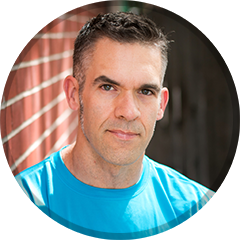Vibration plates have been around for a few years. You may have one in your gym. I’ve never used one and I don’t know much about them but I’ve been aware of them for a while. A recent edition of the New York Times Personal Best section discusses these contraptions in the article Jury is Out on Vibrations’ Effect on Athletic Ability.
I was and to some degree still am skeptical of the whole idea of vibration plate training. The machine makes me think of any number of goofy magical exercise machines that one might see on a late-night infomercial. But some research suggests that there may be some positive and “real” effects of vibration plate training. Vibration plate training may improve strength and jump performance (look here, here, and here), bone density (here, here), among other benefits.
One issue we must consider is the fact that many of these positive studies were funded by vibration plate manufacturers, so there may be a conflict of interest inherent to these studies. Further, no one seems sure that vibration plate offers any benefits over and above other types of training such as plyometric work or weight training. The article states:
“There is something to it,” said William J. Kraemer, a professor of kinesiology at the University of Connecticut and the editor in chief of The Journal of Strength & Conditioning Research, calling it “another tool” for athletic conditioning. But he added that other conditioning methods might yield the same or better results.
“If you think of conditioning as a toolbox, there are lots of tools,” he said. “But when companies are selling something, they want to pretend that one tool does everything.”
Interestingly, no one seems to know how or why vibration plate training works. The effects seem to be short-lived. For instance, a high jumper might use the vibration plate just prior to his or her jump and gain a slight advantage for that jump only.
My personal theory is that perhaps the vibration may drive up the sympathetic nervous system, or the part of our nervous system associated with the fight-or-flight response. If you watch various athletes prior to competition, you often see them jumping up and down, shaking their arms, tossing their head about. Boxers and martial artists do this all the time prior to a fight. I’ve seen Olympic swimmers shaking their arms vigorously prior to their heat. Perhaps all this vigorous shaking is creating a similar effect to the vibration plate. More research is needed to figure this out.
All-and-all, vibration plate training may provide some benefits but as yet, these plates don’t appear to be any sort of miracle device. Money spent on one of these machines might better be spent on a barbell and a few weight plates.

